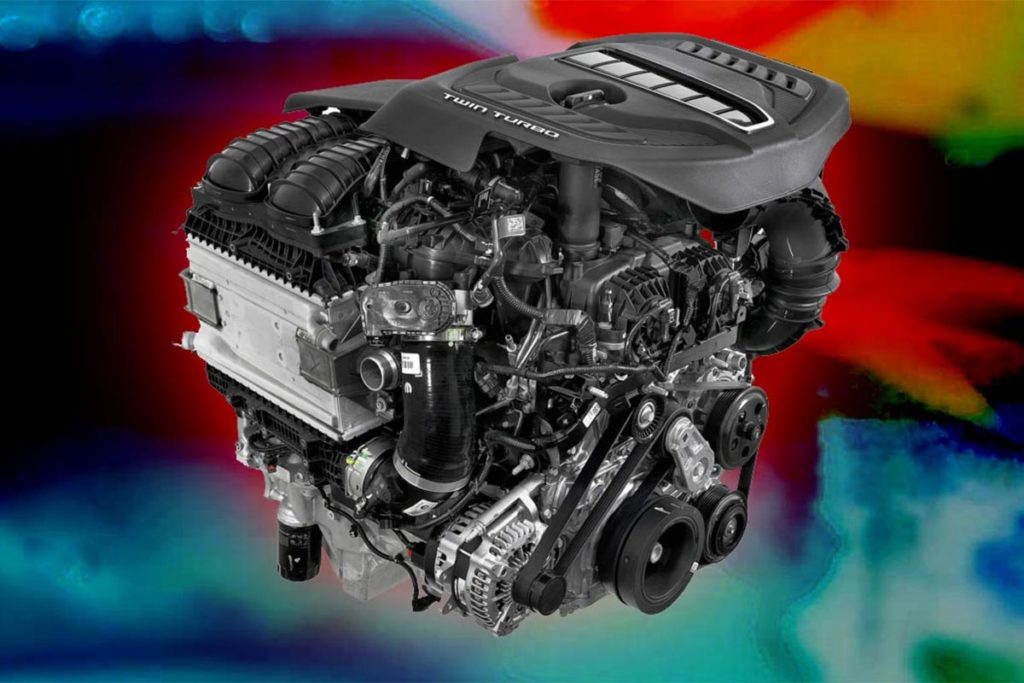
While the future of the combustion-powered car remains uncertain in Europe, Stellantis continues to develop its hybrid combustion engines for the decade 2025-2030. From small 3-cylinders to large 6-cylinders, the Italian-French-American group is banking on a complete range of electrified engines, adapted to its multiple platforms. Here's a complete rundown of the hybrid internal combustion engines we'll be seeing in the coming years.
⚠️ The offer below is a compilation of the data we have collected. It may still evolve according to market strategies, standards or internal group decisions. But it does give a reliable overview of the engines that will be offered on different platforms.
| Platform | Motors |
|---|---|
| STLA City | 3-cylinder 1.0L GSE + BSG |
| STLA Smart | 3-cylinder 1.2L EB2 + eDCT |
| STLA Small | 3-cylinder 1.2L EB2 + eDCT |
| STLA Medium | 3-cylinder 1.2L EB2 + eDCT 4-cylinder 1.6L EP6 + eDCT |
| STLA Large | 4-cylinder 1.6L EP6 + eDCT 4-cylinder 2.0L GME + ZF 6-cylinder 3.0L GME + ZF |
Focus on engines
1.0L GSE + BSG (MHEV)
This small 3-cylinder electrified starter-alternator (BSG) engine will be used exclusively on the new Fiat 500 hybrid. Production is guaranteed until 2030, by which time the Italian city car should be 100 % electric. This is a temporary solution, designed for European customers not yet ready to switch to pure electric. The current Fiat Panda is also equipped with it, and will also be replaced by a 100 % electric model from 2030.
1.2L EB2 + eDCT (HEV)
Already widely used in Peugeot, Citroën, Opel and Fiat, this 3-cylinder turbo combined with an electrified eDCT gearbox is the heart of the range for urban, compact and mid-size SUV models. It is found on STLA Smart, Small and Medium models. Depending on conditions, it can run on internal combustion and 100 % electric power. It is found, for example, in the Alfa Romeo Junior.
1.6L EP6 + eDCT (PHEV)
This 4-cylinder engine, derived from the THP of the previous PSA generation, is reserved for larger vehicles. It bridges the gap between small displacements and the more powerful top-of-the-range units. Watch out for it in future DS and Peugeot models, or in certain Alfa Romeo models such as the future Tonale. It's already in the Jeep Compass (STLA Medium) and will be in the Jeep Cherokee (STLA Large).
2.0L and 3.0L GME with ZF transmission
These are the premium powertrains from Stellantis, designed for its global models, notably on the STLA Large platform. The 2.0L GME, already known from Jeep, Alfa Romeo and certain Dodge models, will be electrified via a ZF hybrid transmission (it could be the ZF 8P4G, to be confirmed), as will the 3.0L GME in-line 6-cylinder, which embodies Stellantis' alternative to the defunct Pentastar V6. These blocks will probably serve the Group's future large sedans, SUVs and American vehicles. They could also be offered in future Alfa Romeo Giulia and Stelvio models.
What disappears or stays elsewhere
- The 1.3L and 1.5L GSE (Firefly), still used on certain models such as the Jeep Renegade, Fiat 500X and Alfa Romeo Tonale, are ending their careers in Europe. However, they will continue to be produced and sold in Latin American markets, where they are very popular and bioethanol-compatible.
- American V8 engines are not included in this table. Although a of their production is plannedHowever, it will be to extend the life of existing models (Dodge Charger, Challenger...) and not on the new STLA platforms.
- Finally, there's no word yet on hybridization of Maserati's Nettuno V6, or on the Trident's future engine strategy. Maserati's thermal future remains unclear.
A two-speed thermal strategy
With this wide range of thermal hybrid engines, Stellantis has set itself the challenge of meeting all customer needs in all regions of the world. This corresponds to the we'll launch the right models, with the right engines, at the right time "by John Elkann. While Europe is moving towards total electrification, North America, South America and certain Asian countries will remain strategic markets for hybrids and even pure combustion engines.
This gives the Group room for manoeuvre until 2030, or even beyond if regulations change. It remains to be seen which models and brands will benefit from these engines over the long term.
Far too many PureTech engines from PSA.
It's a real shame for Alfa Romeo fans.
GME engines for the Stelvio or Giulia, which will be too big and too tall (since the Giulia will no longer be a sedan, according to the news).
We'll have to look elsewhere, or keep our old Alfa Romeo.
Alfa Romeo, once considered one of the best engine manufacturers if not the best, is now condemned to be powered by Pijot dung! Look for the mistake!
Exactly. You have to pinch yourself to believe it, but it happens.
The design will remain a little better, the chassis improved, but as far as engines are concerned, it's the end of Alfa Romeo's specificity. All to be shared with the other Stellantis brands.
But even another engine-maker like BMW is now offering tasteless 3-cylinders, and abandoning what made its reputation, the 6-cylinder.
Alfa has to sell better in order tp exist
When you say best engine, for what? Peugeot is considered a good engine manufacturer and also some sportcars
Alfa cant exist on such sale figures
Bmw sells 2 million per year and more. MB too and even Audi is not far.